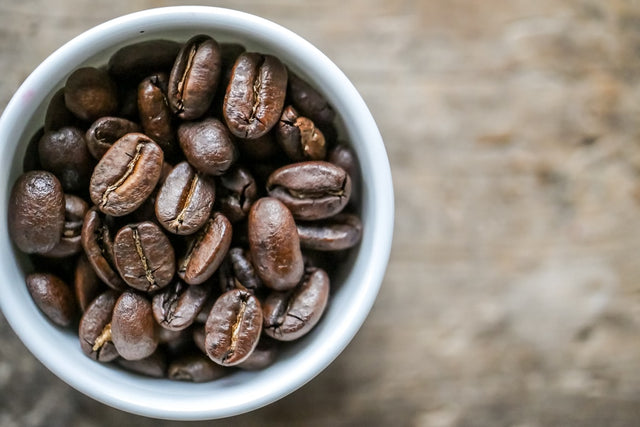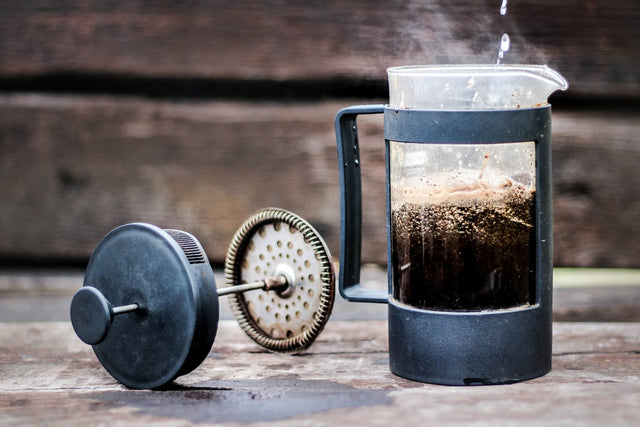A highly concentrated coffee administered in short, strong doses and used as the basis for a wide variety of coffee beverages is espresso. Espresso is a common choice for a beverage. The taste and consistency of regular coffee are stronger, and it contains more caffeine than iced coffee. In contrast, espresso has less caffeine per serving than coffee since it is often given smaller amounts.
What Is an Espresso
Espresso (pronounced ess-PRESS-oh) is a richly flavored, highly concentrated kind of coffee served in "shots" rather than cups (short for shots of espresso). Forcing hot water through extremely finely ground coffee beans in an espresso machine under high pressure produces a rich, delicious beverage. In the end, you'll get a stronger-than-coffee beverage topped off with "crema," a black froth that forms when air bubbles combine with the soluble oils in fine-ground coffee and sits on top of a properly pulled shot of espresso. The presence of crema improves the rich flavor of espresso as well as its long-lasting aftertaste.
Espresso derives from the same plant as coffee, and it is grown, processed, and roasted in the same way as the beverage it intends to complement. No matter what kind of coffee or what roast it is, you may prepare espresso with it. It is essential to examine how the beans are ground and handled in order to make the distinction between coffee and espresso. To make espresso, coffee beans are crushed to a more acceptable consistency than coffee beans and tightly packed before being forced through a machine that pushes hot water through them. The process will result in a shot of espresso, which may be drunk straight or used to make a number of drinks, such as a cappuccino or an Americano, depending on your preference.
Every flavor of coffee is there, but the intensity of each flavor is increased in espresso—bitter, slightly sweet, acidic, toasted, and so on. Depending on how you roast the coffee, the exact flavor profile of the coffee will differ. Comparatively, it has a more affluent and creamier texture as compared to coffee.
Quick Overview and Its History
The invention of steam-powered equipment ushered in a flurry of innovation in the nineteenth century. Almost every sector was adversely affected, including the coffee industry. In 1884, the world's first steam-powered coffee machine was introduced. On the surface, it was just a basic batch brewer, but it served as a stepping stone to something bigger and better.
Italian beverage experts Luigi Bezerra and Desiderio Pavoni improved on this concept, exhibiting the world's first single-shot espresso machine at the 1906 World's Fair in Milan, the world's first time. Compared to modern espresso machines, the equipment produced watery, bitter coffee by applying just a sixth of the pressure used by modern espresso machines.
It didn't go down well with anybody.
Over the following 20 years, hundreds of different espresso machine designs were introduced, each failing to acquire momentum until the early 1930s when La Marzocco machines began to gain traction across Europe. These machines were the first to capture the public's interest for an extended period indeed.
To further elaborate on What is an Espresso, let's fast forward another 80 years or so. Espresso machines no longer use steam to produce their espresso. Powerful pumps propel them, which are often many. When pulling a contemporary espresso shot, they make 7-10 bars of pressure on the machine.
Unfortunately, steam-powered espresso machines are still available for purchase at large box shops under the guise of luxury coffee makers. They certainly aren't. Don't do both of them at the same time.
Uses
Espresso is particularly popular in its native nation of Italy, where it is often consumed straight from the machine, without any additional sugar or cream. What is an espresso shot? They are served in demitasse cups, which are small espresso cups that have been designed explicitly for doing espresso shots. The one-ounce doses provide a fast and powerful pick-me-up that is not overpowering. Espresso may also be served as a two-ounce double shot, equivalent to two espresso shots. Some coffeehouses exclusively offer double shots, also known as doppio, to maintain consistency in quality. Espresso may also be made lungo, or "long," using the same quantity of coffee but twice as much water as is used for a standard espresso. Even though espresso is used throughout the day, it is most popular in the morning and after meals.

Espresso Process of Preparation and Drinking
Even though an espresso portion is referred to as a shot, it is not intended to be consumed in a single swallow. On the other hand, espresso is meant to be drunk slowly to fully appreciate its full, rich taste. Most people like their shot or double shot of espresso alone. However, you may use sugar or another sweetener to enhance the flavor, sometimes served with a sweet biscuit, such as biscotti, to complete the meal.
You may also utilize espresso in the preparation of a variety of popular café beverages, including:
- Caffe Americano: A shot of espresso mixed with hot water is known as an Americano.
- Red-eye: Filtered coffee mixed with one shot of espresso is what you're looking for.
- Caffé Latte: A double shot of espresso topped with steamed milk, a popular drink in Italy.
It is a popular drink in Italy, and it is made by pouring a single shot of espresso into a cup and topping it with steamed and frothed milk.
It is well known that espresso includes a considerable quantity of caffeine.
Although espresso has a reputation for being high in caffeine, the quantity of caffeine you ingest depends entirely on how much espresso you drink. Because the beverage is often served in smaller amounts than coffee, it may have less caffeine than a typical cup of freshly brewed coffee in certain instances. You may significantly increase the quantity of caffeine in a drink by mixing double and triple shot cocktails and mixed drinks such as red-eyes.
Espresso contains between 29 to 100 milligrams of caffeine in a single shot, with the average being 75 milligrams of caffeine. A double shot may include anything from 58 to 185 mg. While a cup of drip coffee has 80-200mg of caffeine depending on the kind and brew technique.
Like any other kind of coffee maker, Espresso machines can produce perfect coffee if appropriately used. Keep in mind, though, that espresso has the flavor of a full cup of coffee packed into a small 1-ounce shot, which is one of the reasons it is so widely consumed.
For many individuals, the intensity of the taste concentration is so strong that they overwhelm the palates by the richness of the flavors. In reality, this is how every one of us begins. The first time one drinks coffee, one does not think, "Wow. This is very good!" "Wow, it was a silky smooth shot of espresso."
Even if the shot is smooth, our taste receptors are usually too startled by the strength of the flavor to be able to discern the difference at first glance. Only by consuming espresso many times will your taste receptors be able to relax and appreciate the subtle tastes of the drink.
Espresso that has appropriately been made has distinct tastes. The acidity is powerful, yet it is also well-balanced. A slight bitterness balances off the acidity and helps to produce bottom notes in the mouth. As you take the shot, rich scents fill your nose and retronasal passageways in the back of your throat. If brewed incredibly well, the shot will have a pleasant sweetness that ties the entire thing together.
As a result of the fact that espresso may be prepared using any coffee, the acidity of espresso will vary based on the roast. Lighter roasts are more acidic than darker roasts, which is because darker roasts tend to mask the inherent acidity of the bean. Many coffeeshop roasts espressos darker than most brewed coffee, which results in espresso being somewhat less acidic than certain brewed coffee.
Purchasing and Keeping
Look for freshly roasted, entire, high-quality coffee beans in their natural state for the most outstanding results. We suggest getting your coffee beans from your favorite local coffee shop or specialty supermarket. Because espresso extracts the most flavor from the beans, choosing a high-quality bean and roast that you like rather than buying a cheap supermarket brand is vital. The same is true when placing an order for an espresso at a coffee shop. Choose a coffee shop that has well-trained baristas and uses freshly roasted, high-quality coffee beans.
Whole beans or ground coffee should be stored in an airtight container that is thick, opaque, and kept in a cold, dark location. Place your coffee in the fridge or freezer only if you want to use the whole bag. Otherwise, it will spoil. Removing the coffee beans from the freezer to use them repeatedly adds moisture to the beans, which saps the taste out of them over time. If your beans were packaged in a thick, resealable foil bag with a valve, it is best to preserve them in the original packing until they are needed.
If feasible, utilize the coffee beans within a week or two after receiving them from the store. Grind the beans just before using them to ensure that they are as fresh as possible to get the best results.
When it comes to creating recipes with specified coffee-to-beverage ratios, today's espresso machines are highly consistent instruments to have on hand. Using scales to calculate the beverage weight, they ensure constant water temperature, pressure, and flow rate, as well as cutting-edge technology. Since then, the emphasis on consistency has moved away from the grinders and onto the players themselves. A new focus has also been on the barista's ability to adjust the grinder according to the brewing technique. Specialty coffee producers and related laboratories place the most emphasis on the following aspects of grinding since they are regarded to be the most important:
PSDs are produced by grinders in several ways, depending on the kind of grinder. Currently, machine manufacturers are focusing their efforts on flat burr grinders that generate a defined PSD using a certain teeth design in the burrs, a specific method of the burr case that contains the burrs, and a particular plan the spout. Finally, but certainly not least, the grinder must provide the barista with the tools necessary to accurately and consistently control the space between the burrs and the speed at which they spin.

Grinder temperature: A higher temperature for the R&G coffee results in a quicker flow rate. A rougher grind or a greater VMD owing to the heat expansion of the grinding mechanism were formerly thought to be to blame for this problem. On the other hand, recent investigations have shown that the most advanced grinders maintain their dimensional stability. It is the coffee bean's behavior that has changed. It seems that the bean is more plastically malleable at higher temperatures and humidity levels, resulting in coarser R&G. The barista is ultimately responsible for responding to changes in environmental circumstances to maintain consistent grinding.
Modern espresso machines push the extraction to a predetermined beverage weight, corresponding to a particular R&G coffee weight in the portafilter. It is known as weight dosing. As a result, instead of operating the grinder's engine for a predetermined period, grinder development focuses on weight dosage. Additionally, it helps to keep the coffee-to-beverage ratio stable throughout all stages of the preparation process.
Grinding machines are also improving their ergonomics for everyday usage, decreased noise emissions, electrical components that will allow for accurate and repeatable operation.se emission, and electrical components that will enable accurate and repeatable operation.
More stories

Where Do Coffee Beans Come From



